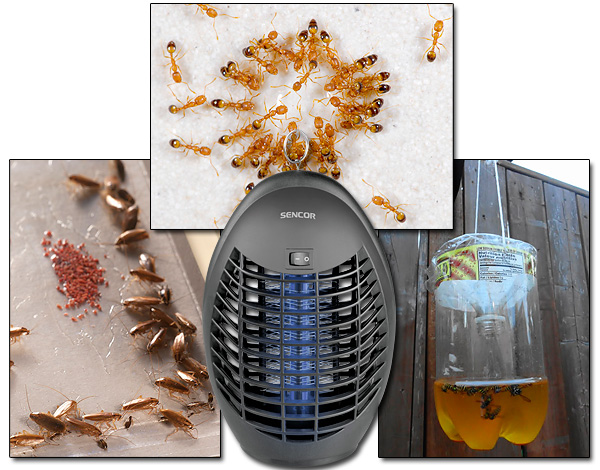
It should be borne in mind that, depending on the conditions of use and the type chosen, one or another insect trap can show both very high efficiency (it will regularly exterminate hundreds of insects), and it can be completely useless. And interestingly, a lot here depends not only on the design of the trap itself and its quality, but also on the person who is trying to use it.
The fact is that each type of trap is focused on the fight against a strictly defined group of insects and takes into account their biological characteristics.For example, cockroaches are attracted to certain attractant substances, many flying insects are attracted to ultraviolet light from lamps, bed bugs are attracted to locally high concentrations of carbon dioxide, and hornets and os are attracted to the smell of sweet and fermented fruit.
Accordingly, if a person, exhausted, for example, by bed bugs, tries to catch them using traps for cockroaches with poisoned bait, such an undertaking will initially be doomed to failure. Similarly, it is pointless to catch cockroaches or ants with electric ultraviolet traps designed to catch flies, mosquitoes and nocturnal moths.
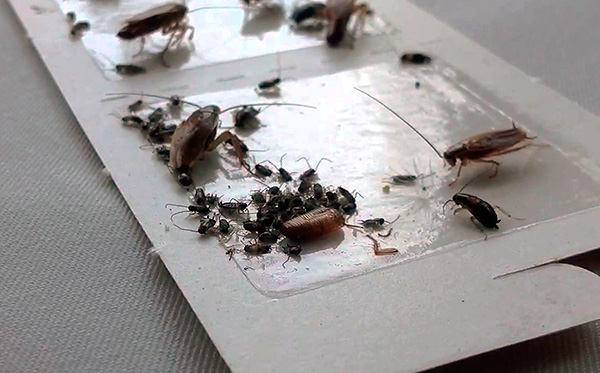
Next, we will look at how to choose and buy a good insect trap that will work really reliably and effectively in relation to your situation.
Types of insect traps
Almost all insect traps can be divided into the following several types:
- Electric flying insect traps - These devices attract mosquitoes, midges and butterflies with the light of a special lamp (usually soft ultraviolet) and then destroy the victim with an electrical discharge when they approach a metal grid in front of the lamp. Such devices are also popularly called electric shock exterminators of flying insects;


- Electric traps for crawling insects - destroy crawling into the structure, for example, cockroaches and ants, with an electric discharge;

- Sticky traps that can be used against both crawling and flying insects. Flying animals can be attracted to the adhesive surface by the light of lamps or a chemical;

- Traps with poison baits - generally speaking, such structures can be considered traps only very conditionally, since they do not catch insects, but only lure and poison. However, you can buy them in stores under the name of traps for cockroaches (and ants);

- And, finally, traps for, so to speak, mechanical collection of insects - their main difference lies in the fact that they do not destroy the insects that have fallen into them. At least not right away. Their task is to collect pests, which are then separately destroyed by the person himself. From such traps, due to the peculiarities of their design, insects simply cannot get out. Below we will consider in more detail examples of such devices.

As noted above, traps of each type work well only against a certain range of insects and under certain conditions.
For example:
- It is convenient to catch cockroaches, bedbugs and domestic ants in small apartments with glue traps placed in places where insects accumulate and move. The situation is a little more complicated with bedbugs - if they live in the mattress of the bed, then the traps will not help here, and the tenants will still not be able to sleep normally in such a bed due to constant bites. However, bugs often live next to the bed (on the walls, behind the wallpaper, behind the baseboards, in the crevices of the bedside table) - in this case, it is enough to put the legs of the bed in the center of the glue trap, and then there will be an insurmountable obstacle on the way of the bugs to the food source (sleeping person). block;
- Diurnal flying insects are easiest to catch with sticky tapes suspended from the ceiling of the room;
- Nocturnal insects are easy to catch with light traps (electric traps). The same devices may well work during the day, including against flies and mosquitoes, although slightly less effectively. These flying insect exterminators are often found suspended from the ceiling above fruit and meat display cases in supermarkets today;
- Woodlice, hornets, wasps, cockroaches, and pharaoh ants can be caught using "traps" with poison baits.
On a note
A classic example of a poisonous "trap" used against cockroaches is balls of egg yolk and boric acid. Few people know that the poisoning effectiveness of such baits can be significantly increased if, instead of boric acid, insecticidal preparations are mixed with the yolk - for example, Delta Zone, Xulat Micro or Get.
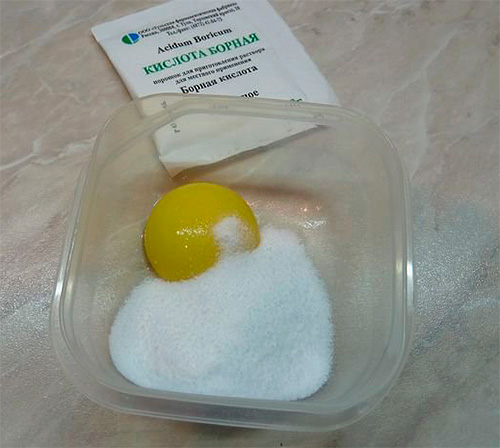
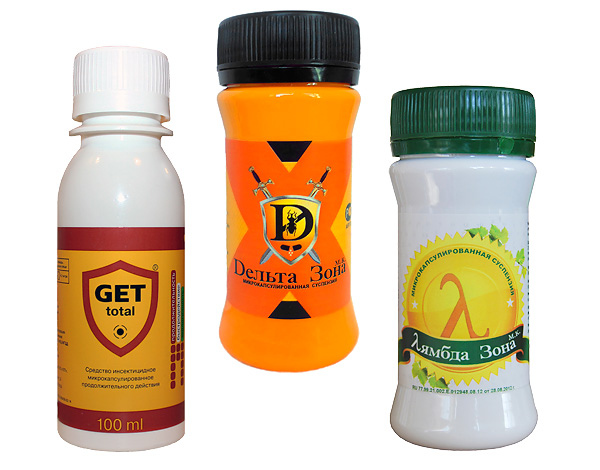
Any insect trap, including an electronic one, today can be made with your own hands - there are plenty of relevant diagrams and descriptions on the Internet. It should be borne in mind that the simpler the principle of operation of such a tool, the more efficient and reliable it usually works.
And further: Convenient and efficient electric insect exterminators
Lamp traps for flying insects
Almost all electric traps for flying insects - butterflies, mosquitoes, flies, moths - are based on attracting pests and parasites with the light of a special lamp and destroying the victim when it hits the electrodes located near the light source. The voltage on the metal grid is usually 500-1000 volts, however, the discharge current is very small, so the devices are quite safe for humans and animals.

Lamp electric insect traps are used not only in apartments and houses, but also in summer cottages (arbors, verandas), as well as on livestock farms and warehouse complexes.
Of the fairly effective electronic insect traps, the following brands are quite popular today:
- Well insect traps, produced both for household use and for the protection of large industrial complexes. The principle of operation is classic for such devices - the lamps are surrounded by a grid, to which a high voltage current is supplied. The design is safe for humans: the light of the lamps complies with sanitary standards, and the metal mesh cannot be reached with fingers thanks to the protective panel.You can buy Well insect traps for domestic use at a price of about 7,000 rubles, and industrial - about 15,000 rubles;

- Insect traps Mo El. Below in the photo, as an example, an ultraviolet trap Mo El is shown, which attracts its victims with the light of a lamp and, in addition, has an additional trap in the form of a fan, which sucks insects flying close to the device.

- Ves Electric are electric insect traps adapted for home use. Compact, lightweight and relatively inexpensive.
Lamp electric insect traps are suitable for the destruction of mosquitoes, midges, flies, moths, scoop butterflies, horseflies and gadflies. You can buy a suitable model today via the Internet, and when choosing, be sure to take into account the area that the device will serve.
For those who want to make their own electric insect trap, it is useful to keep in mind that the cost of components can significantly exceed the cost of a commercially produced device.
Review
“We had to buy four electric traps from Well in the rabbit farm to control insects, although we did not even expect that we would face such a problem when we all started. It's just some kind of attack! Flies-mites began to parasitize on animals, horseflies simply tortured, even nets did not save. We had to hang 4 WE-100-2s in a workshop with an area of 220 squares. Traps work flawlessly, burnt insects have to be shaken out of pallets every three days ... "
Grigory Vitalievich, Barnaul
Sticky tapes against flies
For catching flies (as well as moths), hanging sticky tapes are quite effective. These traps are inexpensive, easy to use and very reliable.You can buy them almost everywhere, while the eminence of the manufacturer does not play a key role here - both Chinese sticky fly tapes and more expensive German-made ones will be effective.

However, a significant drawback of sticky tapes is their low aesthetics, which does not allow the use of such traps in restaurants, cafes and various public institutions - you must admit that a tape with dead and still living flies stuck to it will not add appetite to restaurant visitors.
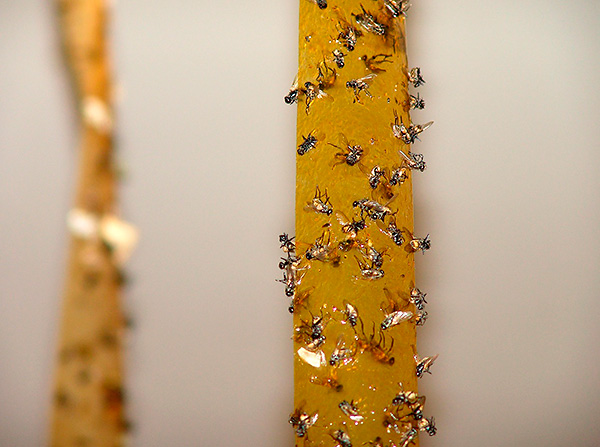
Review
“I can’t go into my parents’ summer kitchen at all. There, hanging from the ceiling, there are about six sticky tapes of such kind, traps for flies, completely covered with dead insects. So disgusting. I don’t understand why not take them off and hang new ones, if there is no living place on these already ?!
Irina, St. Petersburg
Traps for cockroaches and ants
Almost any traps installed on the floor work more or less effectively against cockroaches and ants - it is only important to choose the right place.
And further: List of blood-sucking insects that can bite you in bed or on the couch (the article has more than 20 comments)
Insecticide "traps" for insects are especially effective. In them, pests are attracted with the help of an odorous edible bait mixed with an insecticidal agent (in the case of homemade baits, this can be, for example, borax or boric acid).
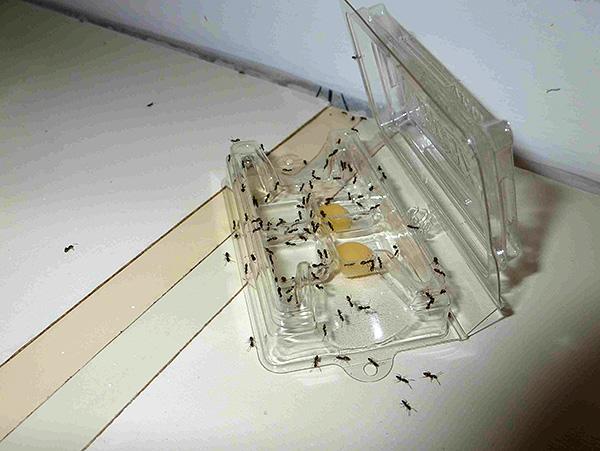
Some of these traps destroy insects in a "chain reaction": the cockroach eats the poisoned bait, runs into the nest and dies. It is eaten by others. They also die. They are also eaten, and the chain continues (albeit with a significant fading of the poisoning effect).
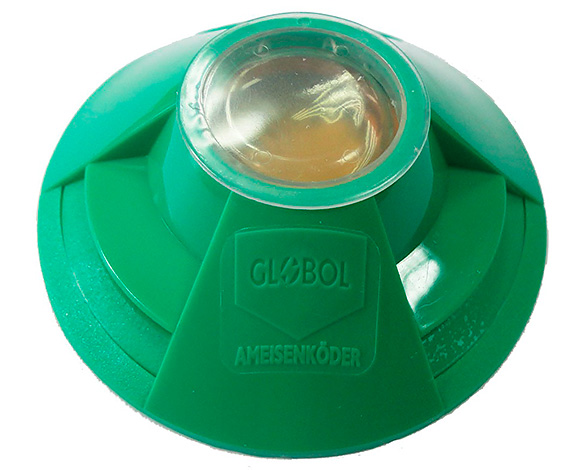
Ants also drag the poisoned baits to their anthill, where they poison other members of the colony, including the queen, which is fed by the workers with the food they bring.
Glue traps work well against cockroaches and ants. The same, for example, cockroaches, with a small number of them in an apartment, you can catch absolutely everyone. With ants, the situation is usually more complicated, since only foragers come across, while the queen in the anthill continues to tirelessly replenish.
On a note
To combat cockroaches, so-called houses are produced, in which insects are destroyed by electric discharges. These plug-in traps are safe for pets because insects do not crawl out of them with poison in their body (cats can get poisoned if they eat several poisoned cockroaches, especially if the insecticide is of the pyrethroid class).
To obtain the maximum effect, traps for cockroaches and ants should be installed in places where insects accumulate and can move: next to the trash can, in the kitchen next to the sink, behind the stove, behind the refrigerator, etc.
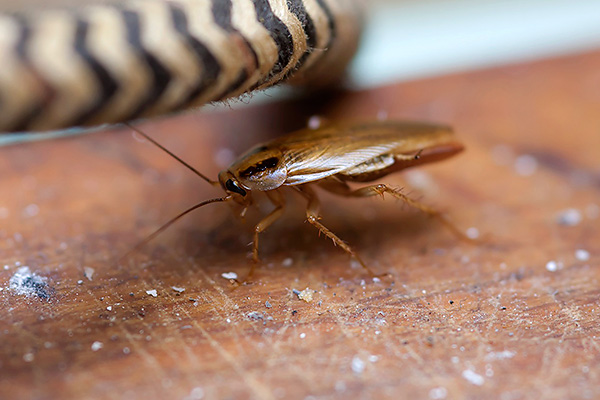
Bed bug traps
Despite the fact that bed bugs are still one of the most common synanthropic parasites in megacities, it is almost impossible to buy specialized traps for them in stores. The reason for this lies in the specific nature of the diet of bedbugs - they feed exclusively on blood, and, accordingly, they cannot be attracted either by tasty-smelling food or by the light of lamps.
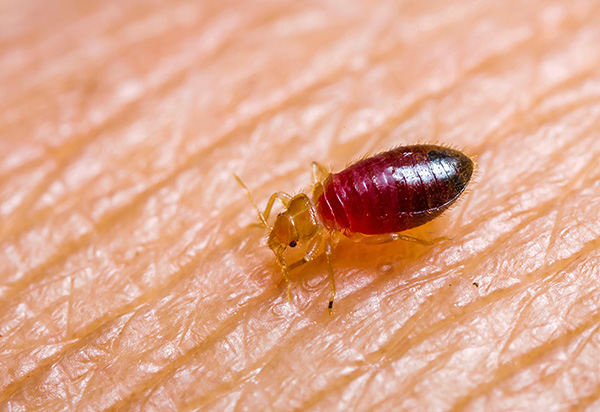
Meanwhile, in the United States, for example, the Bedbug Beacon trap for bedbugs has been tested and is already being put into practice - a device consisting of a saucer-shaped trapping chamber, a vessel with carbon dioxide and a connecting hose. Vapors of carbon dioxide enter the chamber and are gradually released from it, attracting bugs (the same CO2 excreted with the breath of a person). After the bugs are collected in a saucer, they are shaken out of there and destroyed.
So far, such industrial traps for bloodsucking insects are not used in practice in Russia: in fact, bedbugs are almost always destroyed by treating the premises with insecticidal preparations.
On a note
As noted above, bedbugs can also be caught with simple glue traps in the form of drop-down envelopes with a sticky base - you can buy ready-made ones, or you can also make your own from cardboard and insect glue "Alt" or "Kapkan".
It is only important to first make sure that the bugs have not yet had time to establish their nest in the bed. Then the traps placed under the legs of the bed will save your sleep from night bloodsuckers.

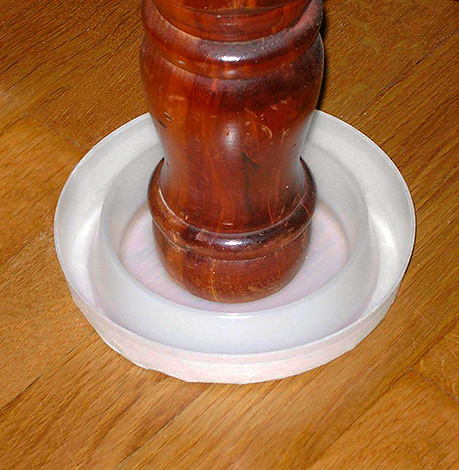
How to catch insects in the garden
In vegetable gardens and orchards, the types of insect traps used are the most diverse. So, for example, beetles, bears, wood lice and slugs are caught here with the help of the lower halves of plastic bottles simply dug into the ground. And separately, wood lice can be collected under halves of potato tubers laid out in the garden.
To catch the rapeseed weevil, special traps in the form of yellow flowers with saucers are used. Beetles are attracted to them due to the yellow color, which imitates the color of fodder plants. Every day, insects are shaken out of them and destroyed.
Hornets and donkeys are caught using plastic bottles, in which the upper third is cut off, turned upside down and inserted into the lower part. Beer with sugar is also poured there, or water mixed with fermented jam. As a result, insects attracted by the smell fly into the trap, but they can no longer find a way out of it. For reliability, boric acid is sometimes added to beer.


In general, it should be noted that despite their effectiveness, traps do not allow you to quickly and completely destroy insects in a selected area or in a single room. In cases where an instant effect is needed and there is no time to wait, it is advisable to use aerosol treatment with modern insecticidal preparations, and use traps for the purpose of prevention - to protect the premises from the penetration of single insects.
If you have personal experience with any type of trap for insect control, be sure to leave your feedback at the bottom of this page (in the comment box).
Interesting video: making a universal insect trap from improvised materials
Effective cockroach trap made from a glass cup, onion and oil

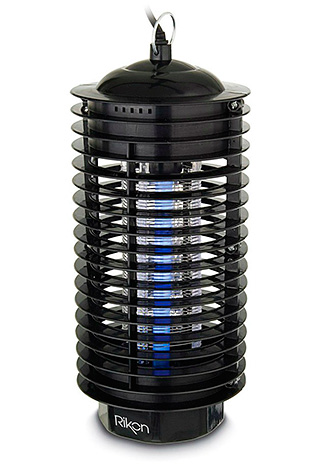
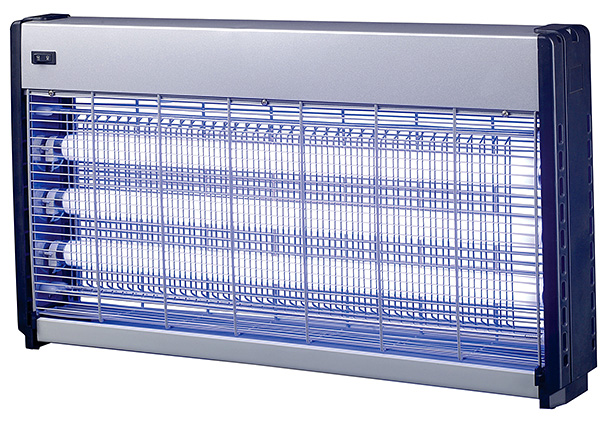
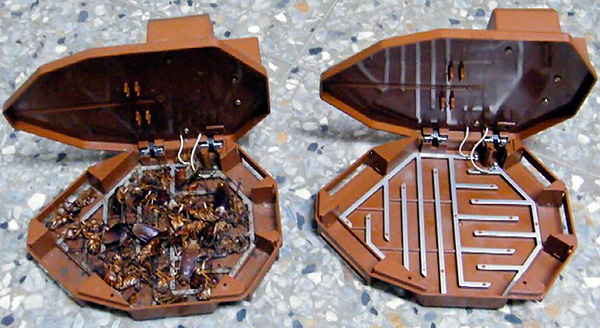
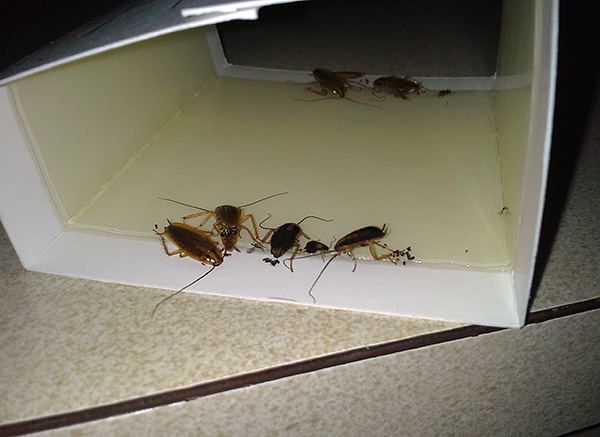
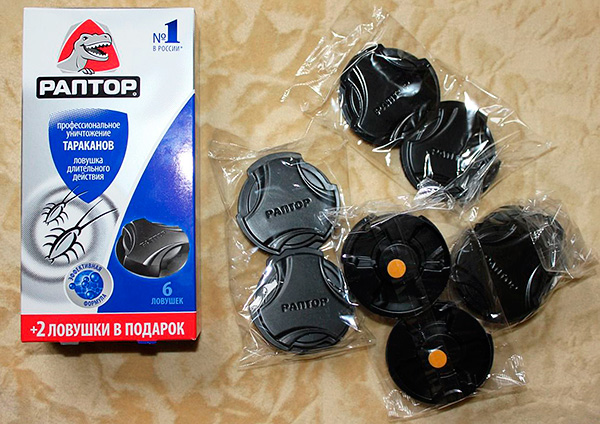
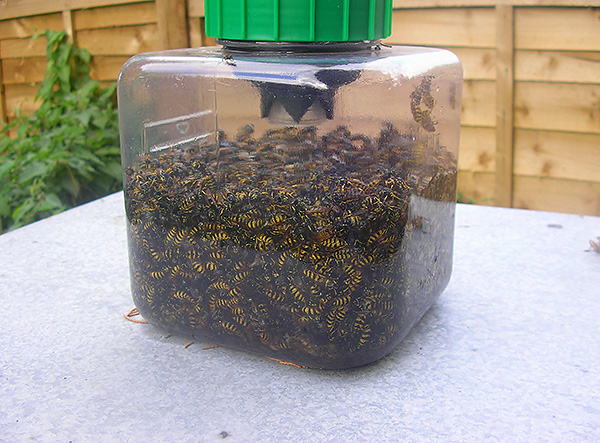
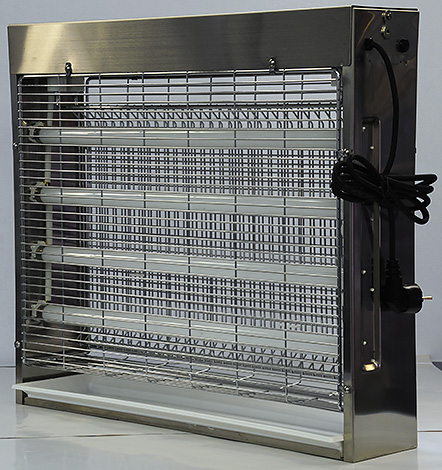
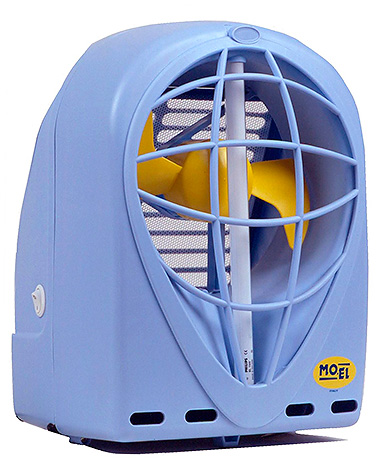
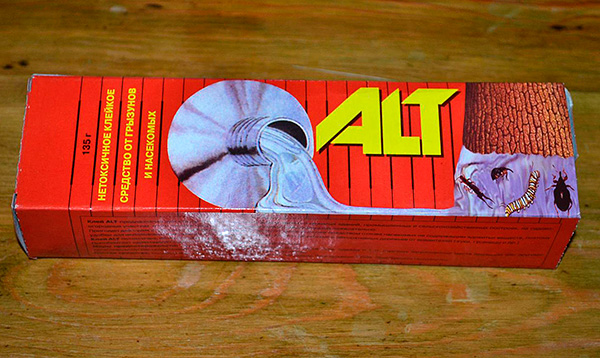
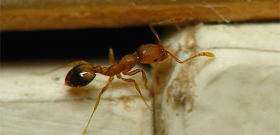
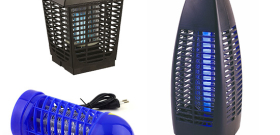
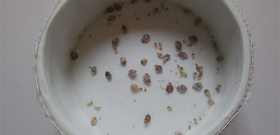
Of course, it is not necessary to destroy bees, but I have a different opinion about mosquitoes. My mosquito exterminator does not attract bees, but thanks to this device, there are much fewer bloodsuckers in the evenings, you can even sit with the children in the cool.